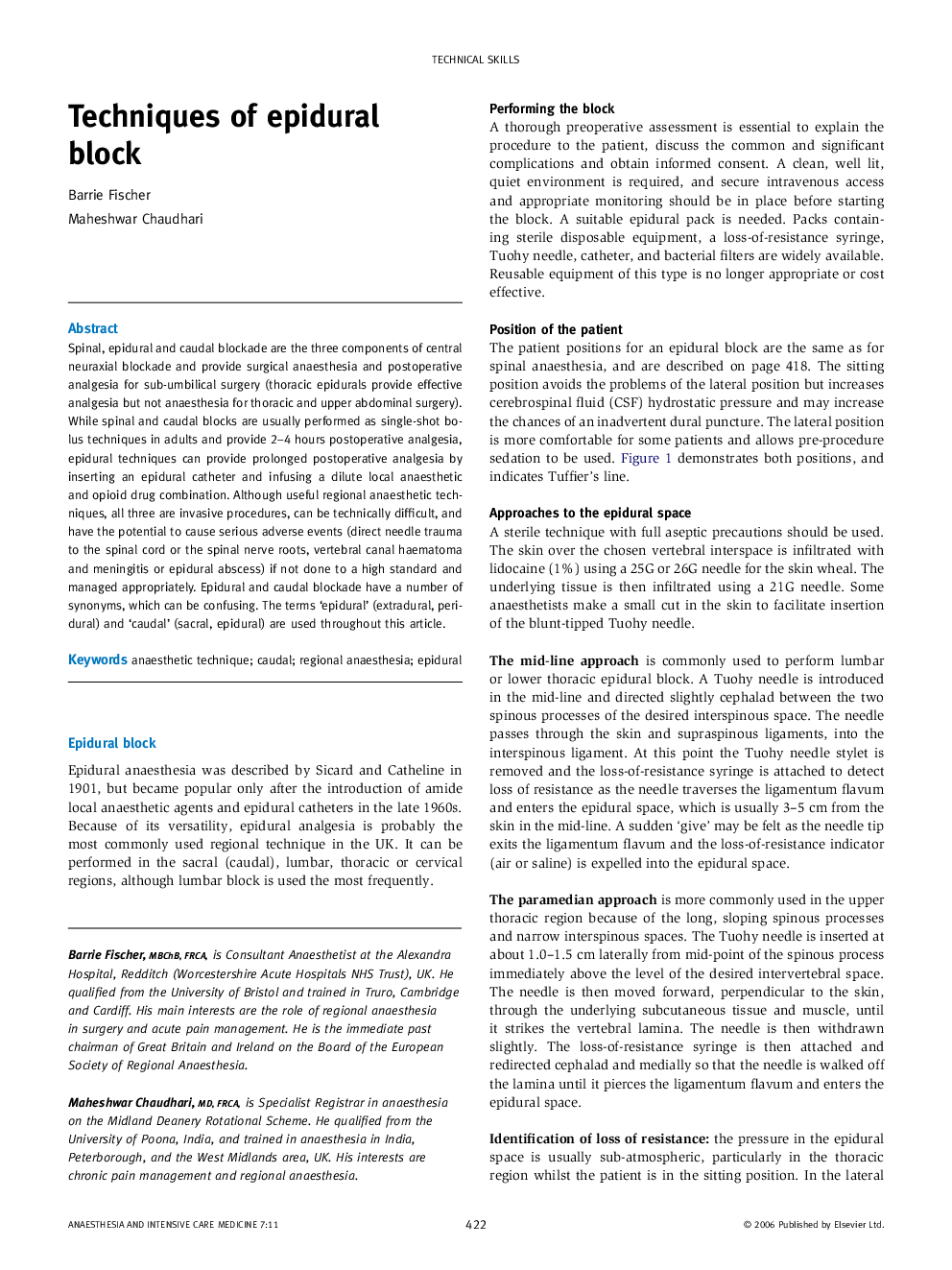| Article ID | Journal | Published Year | Pages | File Type |
|---|---|---|---|---|
| 2743375 | Anaesthesia & Intensive Care Medicine | 2006 | 5 Pages |
Spinal, epidural and caudal blockade are the three components of central neuraxial blockade and provide surgical anaesthesia and postoperative analgesia for sub-umbilical surgery (thoracic epidurals provide effective analgesia but not anaesthesia for thoracic and upper abdominal surgery). While spinal and caudal blocks are usually performed as single-shot bolus techniques in adults and provide 2–4 hours postoperative analgesia, epidural techniques can provide prolonged postoperative analgesia by inserting an epidural catheter and infusing a dilute local anaesthetic and opioid drug combination. Although useful regional anaesthetic techniques, all three are invasive procedures, can be technically difficult, and have the potential to cause serious adverse events (direct needle trauma to the spinal cord or the spinal nerve roots, vertebral canal haematoma and meningitis or epidural abscess) if not done to a high standard and managed appropriately. Epidural and caudal blockade have a number of synonyms, which can be confusing. The terms ‘epidural’ (extradural, peridural) and ‘caudal’ (sacral, epidural) are used throughout this article.
